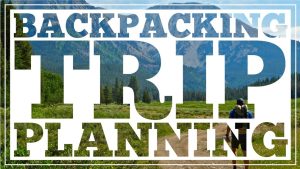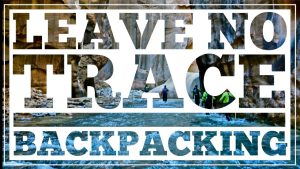Ep. 13 – Backpacking Bear Encounters – Truth & Myth
We independently test everything we recommend.
Buying through links on our site supports our work.
Bear Encounters
I’m Dave Collins for cleverhiker.com, in this episode we’re going to take a look what to expect from bears in the wilderness and how to best protect yourself if you encounter one.
For many backpackers, bears are at the top of their mind while they’re in the wilderness. Bears are the animals that we want to see the most while we’re backpacking, but they’re also the animals that we’re most afraid of.
—
First off, let’s address the danger that bears present in the wild.
Bears are big, strong, smart, incredibly fast, and they have an excellent sense of smell. They also generally want absolutely nothing to do with humans.
It’s likely that bears will know of your presence and avoid you long before you have any chance to spot them in the wilderness.
If you do see a bear in the wild, the most common reaction is for the bear to quickly turn away and run.
Bear attacks do happen, but the likelihood of a bear attacking is incredibly small. Since the year 2000, an average of less than 3 people per year have been killed by bears in North America.
So, to say that you’re more likely to die in a car accident on the way to the trailhead would be an extreme understatement.
You’re about 10 times more likely to die from a dog attack than a bear attack. You’re about 12 times more likely to die from a bee sting than a bear attack.
And you’re about 20 times more likely to die from a lightning strike in North America, which still only happens to about 60 people per year on a continent that is home to around 530 million people.
So, as far as the danger that bears present in the wild, it’s pretty rare that you’ll ever even see one, much less be attacked by one.
Even though the danger of a bear attack is very low, you should always be prepared for bear encounters and know how to properly handle the situation.
—
The most important consideration when camping in areas where bears live is to never allow bears to get into your food.
If a bear gets food from humans it can affect its natural foraging instincts and the bear may start to associate humans with food.
When bears see humans as food sources, they will come back to campgrounds looking for food and they lose some of their natural fear of humans.
When that happens, the bear often has to be captured and either relocated or put down. There’s a common saying that “a fed bear is a dead bear” and it’s very true.
So don’t ever let a bear get an easy meal! Know how to store your food properly or don’t go into the backcountry. It’s just that simple.
—
Bears are active throughout the day, but you’re most likely to see them at dawn or dusk, when they’re generally the most active.
Bears can often be found where the food is. They frequent berry patches, areas with acorns and other nuts, streams filled with spawning fish, and they sometimes feed off of dead animal carcasses.
If you see a bear in the wild, the most important thing to remember is to stay calm and don’t run. Running away from predatory animals can trigger their chase instincts and bears can run much faster than you. So never run.
You’ll also want to be able to quickly identify the type of bear that you’ve encountered. In North America, grizzly bears are most commonly found in Canada and Alaska.
Montana and Wyoming have grizzly populations of around 1,400 bears and there are a very small number of grizzlies living in Idaho and Northern Washington.
If you’re not in one of those areas, it’s safe to assume that you’ve encountered a black bear.
Identifying the difference between a black bear and a grizzly can sometimes be confusing. To start off with, grizzly bears are also referred to as brown bears.
Black bears on the other hand can be black, brown, blonde, and even cinnamon in color.So you can pretty much forget about identifying a bear based on its fur color.
The best way to quickly distinguish between a black bear and a grizzly bear is the distinctive shoulder hump that grizzlies have and black bears do not.
Whichever type of bear you encounter remember to stay calm and don’t run. Talk calmly in a soothing tone to make sure it knows you’re there and that you’re a human.
Chances are that the bear will run away as soon as it knows you’re there. If not, stand tall, back away slowly continuing to talk, and try not to stair them directly in the eyes.
Even if the bear is acting aggressively, by slapping the ground, huffing with its mouth, or making short lunges forward, it’s very unlikely that it will attack. It’s more likely that it is nervous and is trying to scare you.
If you’re hiking with other backpackers, get close together to form a group. If the bear is acting aggressive, it may charge you. If that happens, muster up all of your courage and stand your ground.
The vast majority of bear charges are what’s known as “bluff charges,” where a bear is simply trying to scare you. Again, hold your ground, and don’t run.
Grizzly attacks generally happen suddenly when a bear is surprised and feels threatened, especially when people get between a mother bear and her cubs.
For that reason, experts say that, if you get attacked by a grizzly, the best course of action is to show them that you’re not a threat.
Lie on your stomach with your pack on and cover your neck and head. Once the bear doesn’t feel in danger anymore, it will likely leave you alone.
If the bear flips you over, roll back onto your stomach and continue to play dead. If playing dead fails, fight back with everything you have.
In incredibly rare circumstances, bears may make predatory attacks. If you ever see a bear (or any animal) that appears to be stalking you, arm yourself and be prepared to fight back.
If you are ever attacked by a black bear, consider it a predatory attack. Use any weapon that you can get your hands on and fight back with everything you have.
Another protection option that experts recommend, especially in grizzly country, is bear spray. Bear spray is like a stronger version of pepper spray that will irritate the nose, eyes, throat, mouth, and lungs of a bear.
It can be shot in the face of a charging animal to avoid an attack. If you choose to bring bear spray, you’ll want to keep it on your belt in an easily accessible location.
—
To avoid bear encounters altogether, the most important thing is to make sure that a bear can hear you coming. That will give them an opportunity to leave the area before you get there.
All you really need to do is make noise to let them know you’re there. Clap, sing, yell out, or hoot. That will be enough to alert bears to your presence.
Making noise is most important when you are hiking into the wind, where bears won’t be able to smell you, or when you’re hiking in thick brush, where bears won’t be able to see you, or hiking near noisy stream where bears won’t be able to hear you.
The main thing you want to avoid is surprising a bear at close range and making them feel threatened.
Also, if you’re in bear country, it’s generally a good idea to cook your dinner away from the spot that you’ll be pitching your shelter.
Some campers even cook dinner an hour or so before choosing a spot to camp for the night to avoid attracting animals to their campsite.
—
It’s easy to get frightened about bear encounters in the wilderness, but you have to remember the facts.
It’s very unlikely that you’ll even see bears in the wilderness and extremely unlikely that you’ll ever be attacked by one.
So take the proper precautions, know what to do if you see a bear in the wild, and enjoy the safety of the trail.
I’m Dave Collins for CleverHiker.com. Hike light, hike smart, and have fun.
MORE EPISODES IN THIS SERIES
View all





